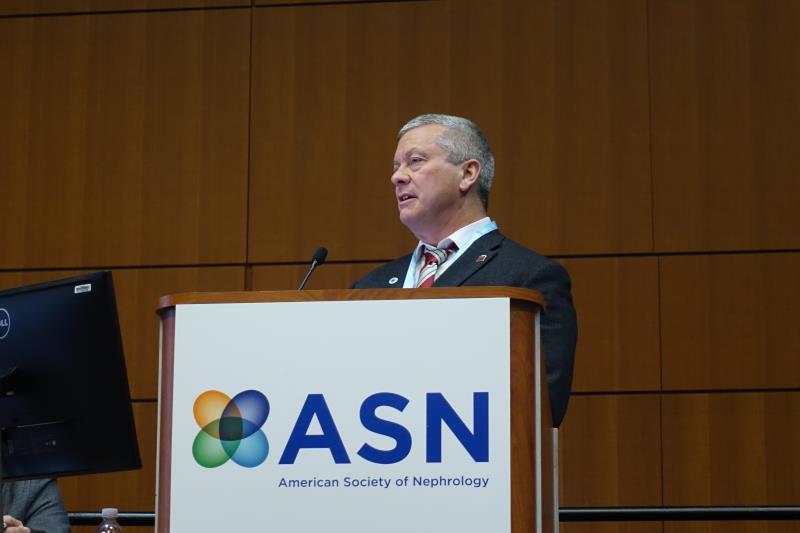 Kenn Daratha, PhD, from the Providence Medical Research Center in Spokane, Washington, US.
Kenn Daratha, PhD, from the Providence Medical Research Center in Spokane, Washington, US.Individuals with chronic kidney disease (CKD) had an increased risk of reaching clinically relevant eGFR* decline thresholds compared with individuals who are at risk** for CKD, with diabetes and albuminuria independently predicting this risk, according to data presented at ASN Kidney Week 2019.
The CURE-CKD registry*** included more than 2.6 million participants (aged >18 years, mean baseline eGFR >15 mL/min/1.73 m2), from which four analysis sets were formed to evaluate eGFR declines of 30, 40, and 50 percent from baseline. These thresholds were compared among individuals with CKD vs at risk for CKD (set A; n=1,005,986), CKD patients with vs without diabetes (set B; n=99,936), diabetic CKD patients with vs without albuminuria (set C; n=21,650), and nondiabetic CKD patients with vs without albuminuria (set D; n=78,286). [ASN Kidney Week 2019, SA SA-OR084]
After controlling for potential confounding variables#, analysis of set A revealed that patients with established CKD were independently twice as likely to reach clinically relevant increases in eGFR decline compared with those at risk for CKD (adjusted hazard ratio [adjHR], 1.90, 2.01, and 2.10 for eGFR decline of 30, 40, and 50 percent, respectively; p<0.0001 for all).
Analysis of set B showed that diabetes was an independent predictor of eGFR decline, given the significantly increased risk of eGFR decline among CKD patients with vs without diabetes (adjHR, 1.49, 1.57, and 1.64 for eGFR decline of 30, 40, and 50 percent, respectively; p<0.0001 for all).
Analyses of sets C and D highlighted albuminuria as another independent predictor of eGFR decline, as individuals with albuminuria exhibited greater eGFR decline vs those without albuminuria, both in patients with diabetes (adjHR, 1.40, 1.42, and 1.44) and without diabetes (adjHR, 1.79, 1.90, and 1.96; p<0.0001 for all).
“[The] risk of excess morbidity and mortality steeply increases with decline in eGFR … [hence the need to validate] risk factors for eGFR decline,” said Kenn Daratha, PhD, from the Providence Medical Research Center in Spokane, Washington, US, who presented the findings.
“To our knowledge, this is the largest study to date of clinically representative patients drawing from two large healthcare systems … These data should be used to refine risk stratification for patients with and at risk of CKD and should inform the design of observational studies and randomized clinical trials,” said Daratha.